|
|
Post by Dietmar on Nov 27, 2017 17:37:30 GMT -5
Charlie has sent me this well known portrait of a Cheyenne delegate to Washington in 1873, but little is known about his identity though. Can anyone help? 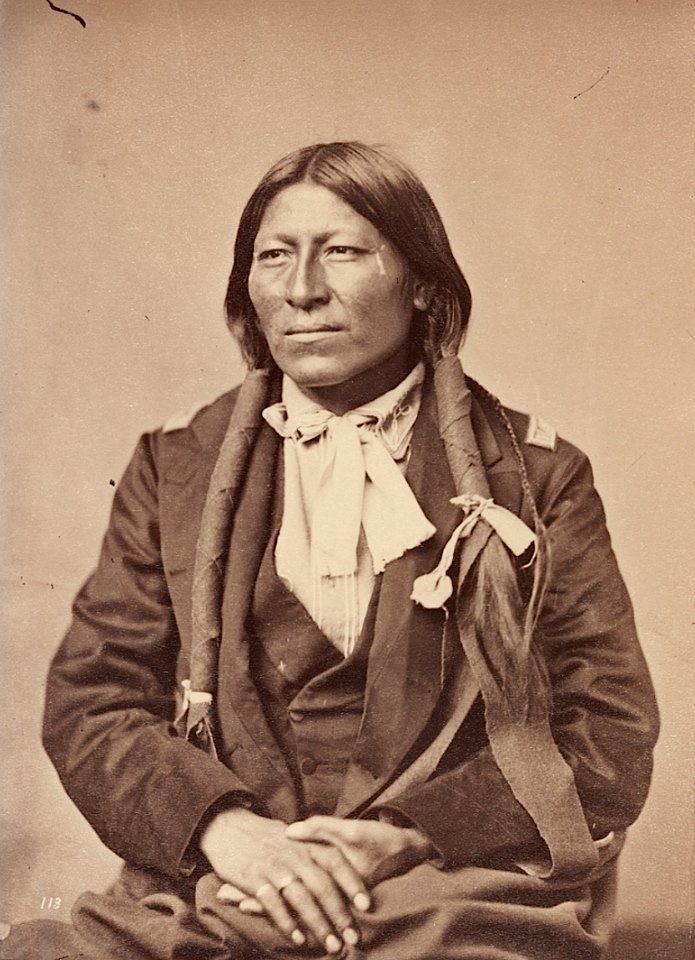 |
|
|
|
Post by glebborisov on Nov 28, 2017 10:47:41 GMT -5
Father Peter Powell in his People of the Sacred Mountain gives an opinion that this man maight be Crazy Mule holy man of the Northern Cheyenne. but also states that he is too young to be such a person.
|
|
|
|
Post by Dietmar on Nov 28, 2017 16:45:24 GMT -5
Okay, I´ve found my copy of People of the Sacred Mountain. My theory is this:
On page 844 (Volume II) it is stated that Crazy Mule (aka Medicine Man) was a holy man of the Northern Cheyenne. He was certainly too old to be the young man in the photo above, whose portrait is on the same page in the book.
On page 843 we have a photo of an older man, said to be Pawnee (aka The Ree), a prominent headman of the Bowstring Society. Powell states that he was the youngest man of the Southern Cheyenne delegation. But the photograph of an older man on that page doesn´t fit to the description.
I think it likely that both photos were mixed up. So the man in Charlie´s picture could be Pawnee, a Southern Bowstring headman.
On the other hand, Pawnee is identified differently on page 837 in a portrait with Old Whirlwind by Alexander Gardner. So there my theory goes...
|
|
|
|
Post by kingsleybray on Nov 29, 2017 3:39:11 GMT -5
I tried that one too, Dietmar
|
|
|
|
Post by Dietmar on Nov 29, 2017 16:20:40 GMT -5
I changed the title of the thread and moved it to another section.
|
|
|
|
Post by Dietmar on Nov 29, 2017 16:23:35 GMT -5
The photographs of the 1873 Cheyenne and Arapaho delegations are listed in W. H. Jackson´s “Descriptive Catalogue of Photographs of North American Indians”.
Alexander Gardner took pictures in each case with two individuals (except No. 755: Ouray´s son), Charles Milton Bell photographed the single portraits:
No. 118, 119, 120, 121, 109: Little Robe (Hah-ket-Home-Mah), Southern Cheyenne
110: [Old] Whirlwind (Min-nin-ne-wah), Southern Cheyenne
111: White Shield (Whoak-poo-no-bats), Southern Cheyenne
112: White Horse (Wo-po-ham), Southern Cheyenne
113: Medicine Man (Bah-ta-che), Southern Cheyenne
114: Pawnee, Southern Cheyenne
115: Ed. Guerrier, interpreter, Southern Cheyenne
30, 31: Stone Calf and wife, Southern Cheyenne
116: Whirlwind and Pawnee, Southern Cheyenne
117: Little Robe and White Horse, Southern Cheyenne
21: Yellow Bear & Little Wolf, Southern Arapaho
22: Powder Face and wife [Wauk], Southern Arapaho
23: Medicine Pipe and Fool Dog, Southern Arapaho
755: A Young Man [Friday, son of Ouray], Southern Arapaho
26: Lame White Man & Wild Hog, Northern Cheyenne
27: Bald Bear & Cut Foot, Northern Cheyenne
28: Dull Knife & Little Wolf, Northern Cheyenne
29: Crazy Head & Spotted Wolf, Northern Cheyenne
24: Crazy Bull & Friday, Northern Arapaho
25: Plenty Bears & Old Eagle, Northern Arapaho
[Note that there are two individuals named Friday!]
In the last months of the year 1873 delegations of various Indian nations were in Washington to council with representatives of the U.S. government. A group of Crows under the leadership of Blackfoot and Iron Bull were there first. They met briefly with the arriving Cheyennes and Arapahoes, who in turn several days later had a meeting with the Utes of Ouray, who had the pleasure of reuniting with his lost son for a last time.
The Southern Arapahos in charge of special agent J. F. Williams were the first of the Arapaho/Cheyenne contingent that arrived on October 28, 1873. The group consisted of Powder Face (principal chief) and his favorite wife Wauk, Yellow Bear, Little Wolf, Medicine Pipe, Fool Dog, and Friday (“Ute boy”).
The Southern Cheyennes arrived next on October 31. Agent John Miles led the delegation. When they passed through St. Louis bound for Washington, they registered in one of the hotels. Their names were given as Stone Calf, Little Robe, Whirlwind, White Horse, White Shield and Medicine Man, altogether six Indians. Why Pawnee and Edmund Guerrier were not mentioned is unclear.
Eleven Northern Cheyennes and five Arapahos arrived on November 7, 1873, in charge of Gen. John E. Smith, and accompanied with Jules Coffee [Ecoffey?], William Rowland (interpreter for the Cheyennes), Joe Bisneth (mixed-blood interpreter for the Arapahos) and Thomas Reed.
The names in the groups are:
Northern Arapahoes: Old Eagle, Iron, Eagle Dress, Plenty Bear and [Chief] Friday.
Northern Cheyennes: Dull Knife, Strong Wolf, Black Hawk, Little Wolf, Spotted Wolf, Lame White Man, Crazy Head, Crow, Old Wolf, Bear Who Pushes Back His Hair, alias “Wolf Who Has Lain Down”, and White Powder.
(see: Evening Star newspaper, Nov. 8, 1873)
So, we have some new names that don´t turn up in Gardner´s or Bell´s photographs. Food for thought…
|
|
|
|
Post by kingsleybray on Nov 29, 2017 17:25:10 GMT -5
there is a document in the Red Cloud Agency Letters Received File, by Col J.E. Smith, "Leaves list of names of delegation of Northern Cheyennes & Arapahoes in his charge", received at Office of Indian Afffairs on November 10th, 1873. It reads like this:
"Delegation of Northern Cheyennes and Arrapahoes in charge of Jno E Smith USA Special Agent
Cheyennes
1. Dull Knife
2. Little Wolf
3. Crazy Head
4. Spotted Wolf
5. Wild Hog
6. Lame White Man (Lamed by a white man)
7. Bald Bear
8. Cut Foot or Old Wolf
9. Pile of Bones
10. Half Bear
11. Old Crow
Arrapahoes
1. Plenty Bear
2. Old Eagle
3. Crazy Bull
4. Iron
5. Friday
Interpreters
Jules Ecoffey
Joseph Bissonette
William Rowland
Thos Reed
Total Indians 16.
Interpreters 4
[Total in party] 20"
|
|
|
|
Post by Dietmar on Nov 29, 2017 18:07:57 GMT -5
Thanks Kingsley.
This confirms there were 5 Northern Arapahoes in Washington. Only four were photographed, somehow Iron was left out.
Crazy Bull´s other name possibly was Eagle Dress.
Of the 11 Northern Cheyennes only 8 were photographed by Alexander Gardner:
Dull Knife, Little Wolf, Spotted Wolf, Lame White Man, Crazy Head, Old Wolf [aka Cut Foot], Bald Bear and Wild Hog.
We don´t have 1873 portraits of Pile of Bones, Half Bear and Old Crow.
The rest of names we find in the Evening Star article possibly are second names of the men above:
Bear Who Pushes Back His Hair (aka Wolf Who Has Lain Down), Strong Wolf, Black Hawk and White Powder.
|
|
|
|
Post by charlie on Nov 30, 2017 3:30:04 GMT -5
So, we can labelled the wonderful photo above (made by Carles Milton Bell) as: MEDICINE MAN (Bah-ta-che) Southern Cheyenne, aged about 30.
Other info about him?
|
|
|
|
Post by Dietmar on Dec 1, 2017 8:17:00 GMT -5
These are all available pictures of the 1873 Cheyenne/Arapaho delegations, sorted by tribes, north and south. High resolution scans are easy to find in the net. I recommend Princeton University Digital Archives. Southern Cheyenne: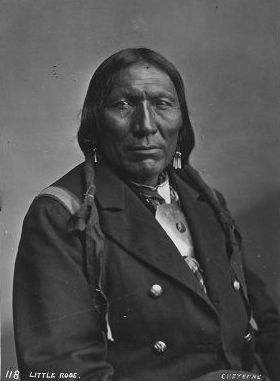 118. Little Robe 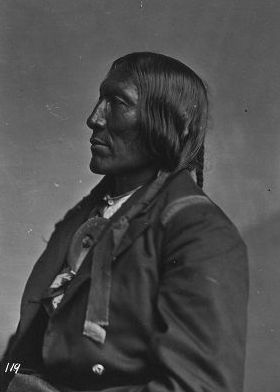 119. Little Robe 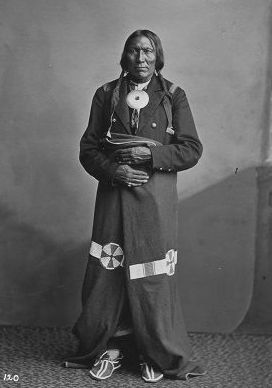 120. Little Robe 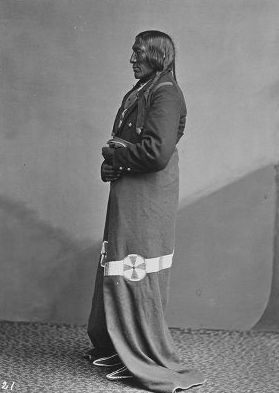 121. Little Robe 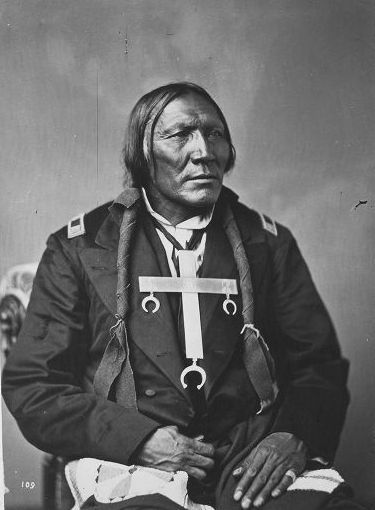 109. Little Robe 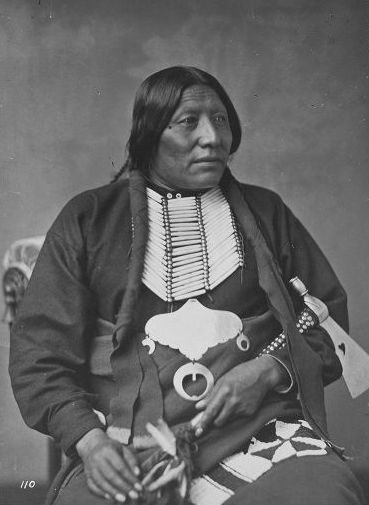 110. Old Whirlwind 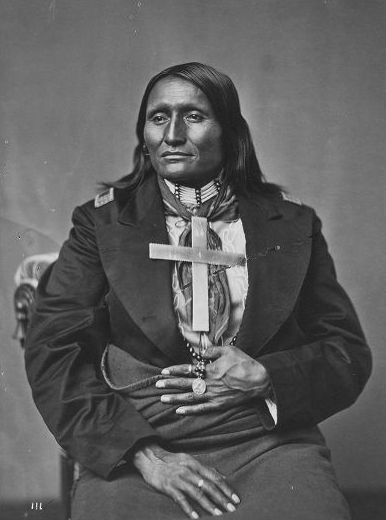 111. White Shield  112. White Horse 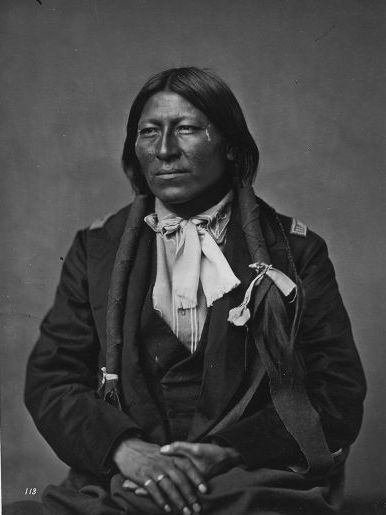 113. Medicine Man 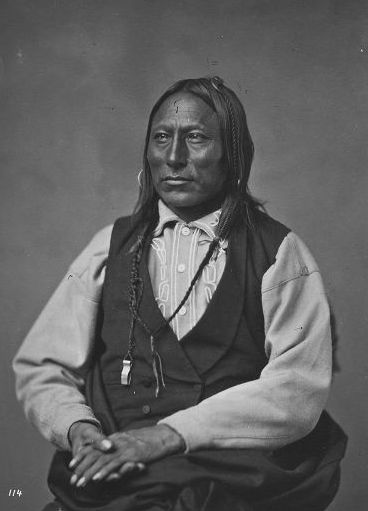 114 Pawnee 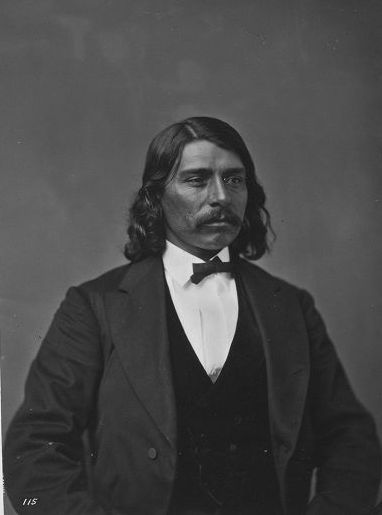 115. Edmund Guerrier 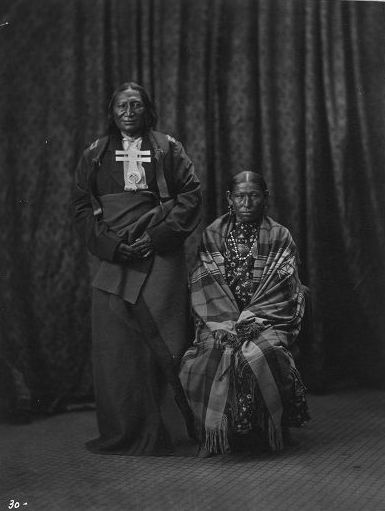 30. Stone Calf and wife 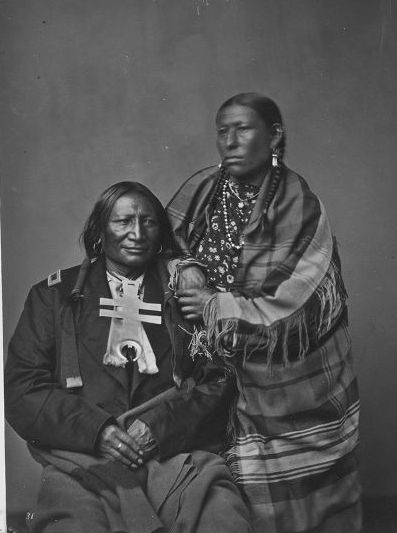 31. Stone Calf and wife 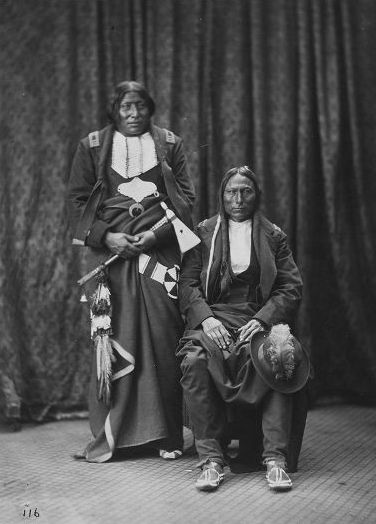 116. Whirlwind & Pawnee 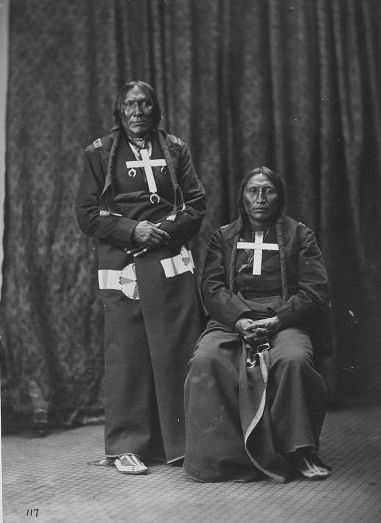 117. Little Robe & White Horse Southern Arapaho: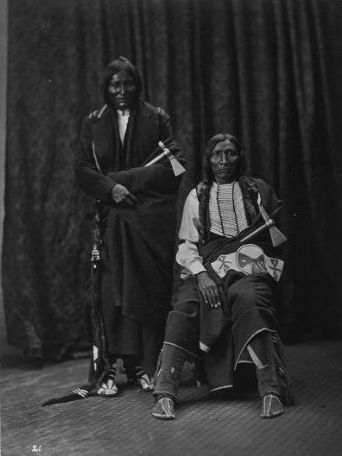 21. Little Wolf & Yellow Bear 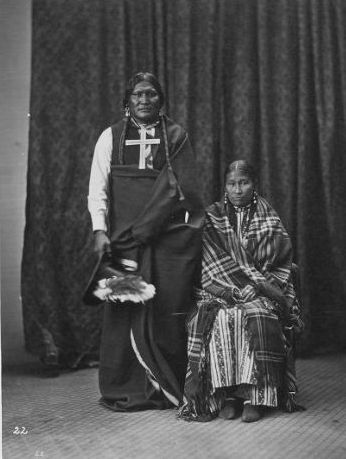 22. Powder Face and wife [Wauk] 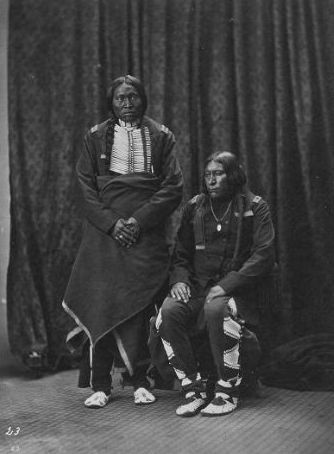 23. Medicine Pipe and Fool Dog, Southern Arapaho 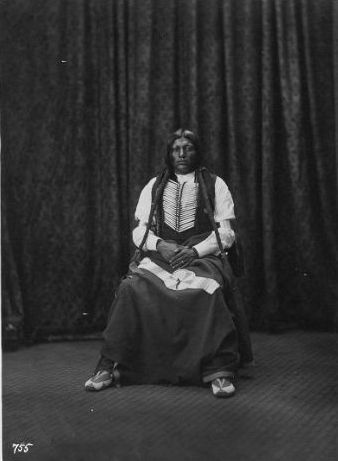 755. A Young Man [Friday, son of Ouray] Northern Cheyenne: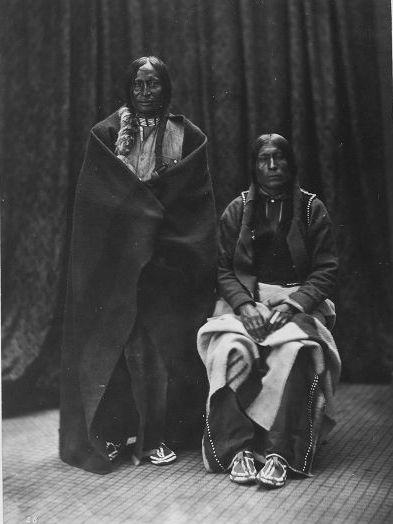 26. Wild Hog [?] & Lame White Man 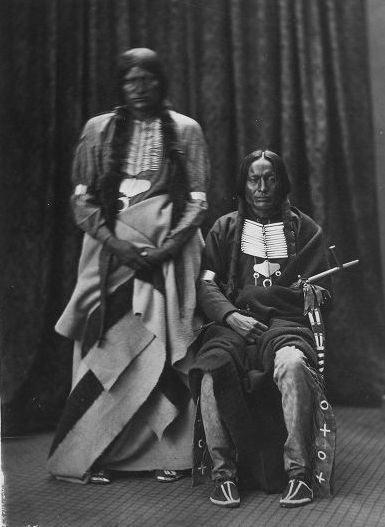 27. Bald Bear & Cut Foot 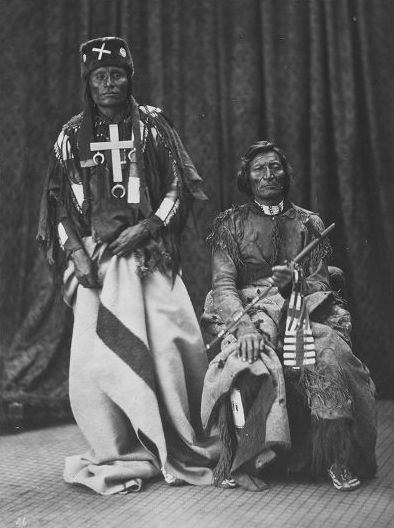 28. Little Wolf & Dull Knife 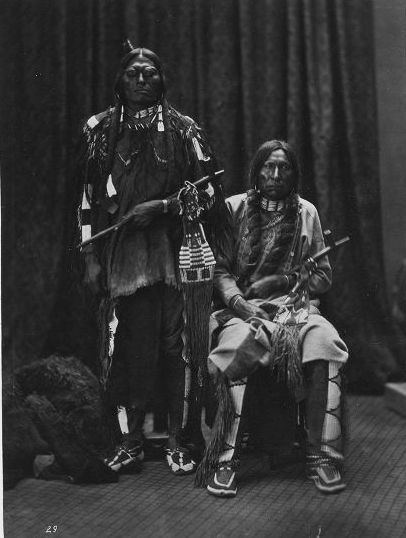 29. Spotted Wolf & Crazy Head Northern Arapaho: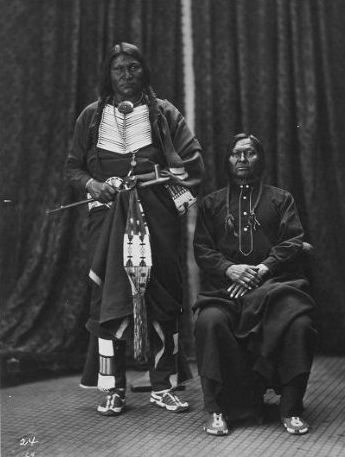 24. Crazy Bull & Friday 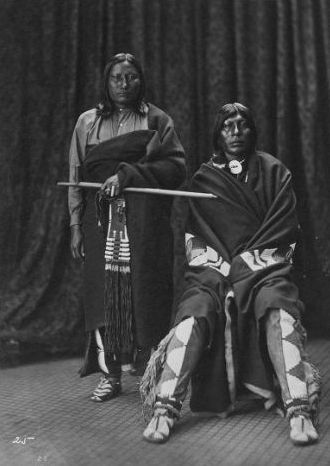 25. Plenty Bear & Old Eagle |
|
|
|
Post by Dietmar on Dec 1, 2017 8:23:18 GMT -5
Personally I would at least leave a little question mark behind the identification of Medicine Man. We haven´t find any reliable proof, that he is another person though. However, there are more questionable identifications in the 1873 delegation photograph series. Kingsley´s Red Cloud Agency list and the Evening Star article had Iron as a fifth Northern Arapaho delegate, though only four appear in the photographs. I see a strong resemblance of Plenty Bear and later portraits of Iron (or Bitcisa). I think they could be one and the same person. So why are both names listed? 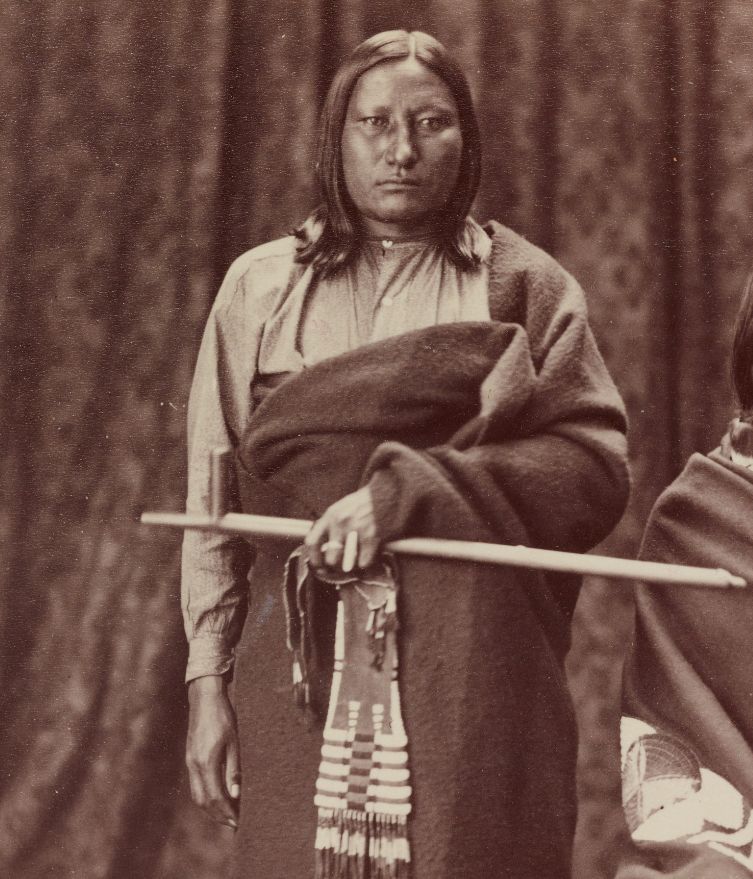 Plenty Bear, 1873 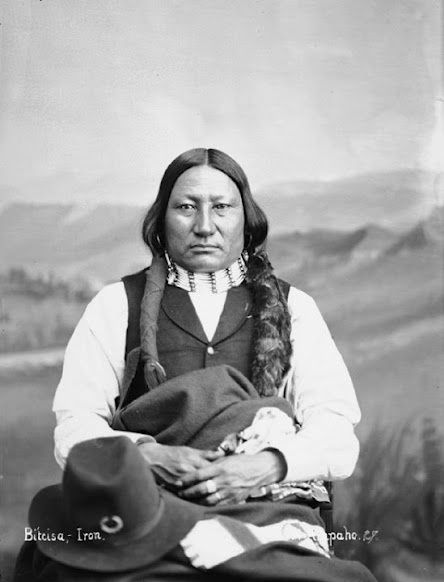 Iron, Northern Arapaho, ca. 1880 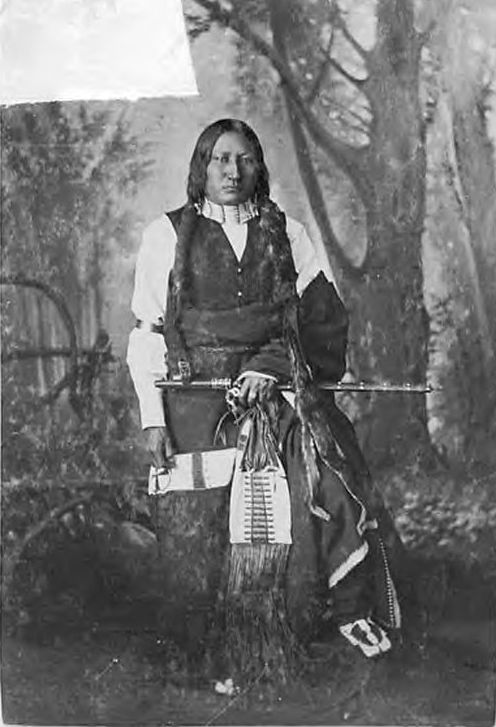 Iron, ca. 1880 at Carlisle 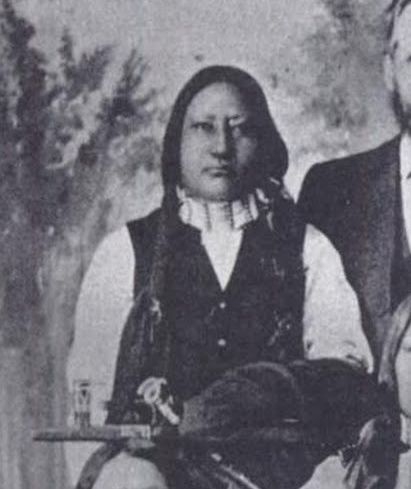 Iron, ca. 1880 at Carlisle The man who appears in Gardner´s photograph with Lame White Man according to the Jackson Catalogue is Wild Hog. Other portraits of Wild Hog show that there is no resemblance at all. I would say he definitely isn´t Wild Hog. I´ve seen the same man also been identified as Old Wolf. But there are several sources that state that Old Wolf's other name was Cut Foot, most importantly John Stands in Timber. And Cut Foot has been identified in another Gardner photo with Bald Bear. 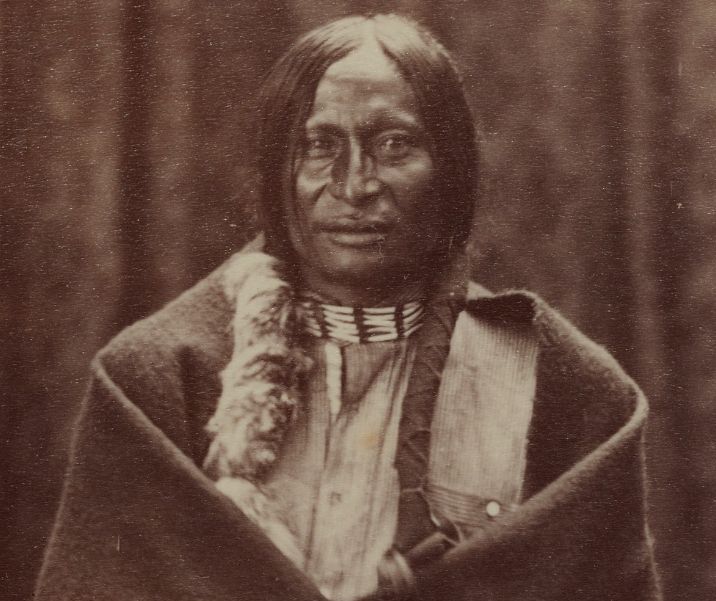 allegedly Wild Hog or Old Wolf, 1873 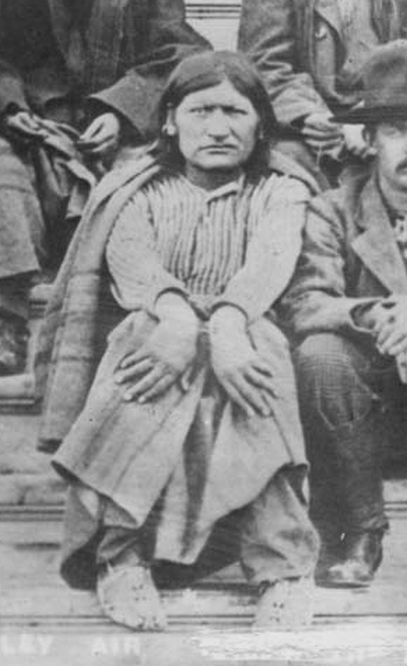 Wild Hog, 1879 |
|
|
|
Post by Dietmar on Dec 1, 2017 9:04:10 GMT -5
Bear Who Pushes Back His Hair is another name for Bald Bear aka Hairless Bear.
Strong Wolf is likely Lame White Man, wo was also known as Rapid Wolf or Mad Hearted Wolf.
White Powder was also known as White Clay or White Dirt.
Black Hawk, according to Powell, could perhaps be Black Eagle, a Northern council chief.
|
|
|
|
Post by Dietmar on Dec 1, 2017 9:12:53 GMT -5
Father Powell´s footnotes lead to a Christian Barthelmess photo of Cheyenne men that includes Old Wolf and also Spotted Wolf, the younger. A small sample is shown on this page: www.american-tribes.com/Cheyenne/bio/TwoMoons.htmSo it seems Old Wolf is the man with Lame White Man, while Wild Hog is in no 1873 photo at all. In turn Cut Foot in the Gardner photo with Bald Bear has likely be misidentified, or am I mistaken? |
|
|
|
Post by charlie on Dec 1, 2017 13:11:36 GMT -5
Dietmar, wonderful work! I'm agree: there are no resemblance between Wild Hog (1879) and Wild Hog (1873). It's very probably that the man near Lame White Man is OLD WOLF, that is included in one of your list.
I would like to know bio info about CRAZY HEAD and OLD WOLF: they seems to be very important chief.
|
|
|
|
Post by charlie on Dec 1, 2017 16:12:12 GMT -5
CRAZY HEAD (Heme'kone Ôhmâsęhanee'ęstse): Northern Cheyenne (O'mi'sis?) father was a Cheyenne, mother a captured Crow. A council of 44 chief.
Listed as a war chief at LBH battle and considered the third-ranking Cheyenne in the battle. Wooden Leg called him
"the most important tribal big chief". Fought Custer's column and wore a war bonnet.
Presence confirmed by Meyers. Still alive in 1908. Gardner, not by chance, photograped him near Spotted Wolf:
what a couple of great chiefs! And Gardner has put another great war chief, LAME WHITE MAN, near to OLD WOLF.
Hence, I think that this last also was an important chief.
|
|